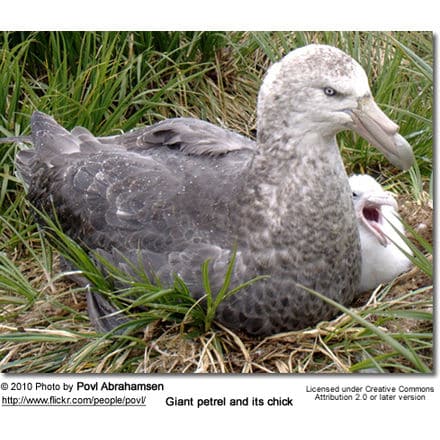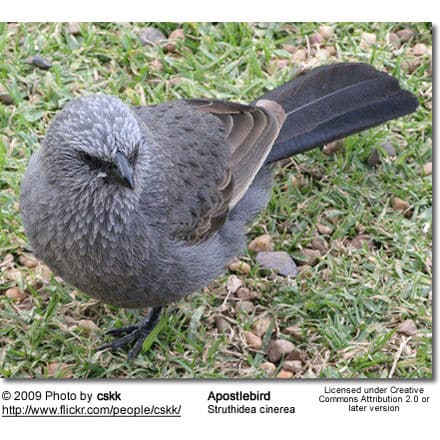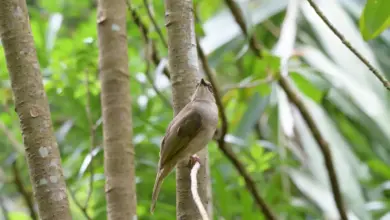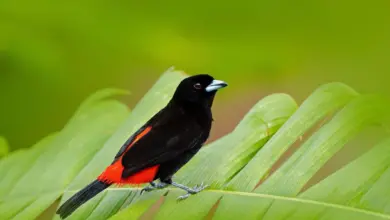Dark Eyed Junco Migration: All You Need To Know
In this article, I cover the current migratory pattern of Darky Eyed Juncos and how climate change is significantly reshaping their behavior and migratory range.
The black-eyed junco (Junco hyemalis) belongs to the sparrow family – or, more precisely, to the family of New World and American Sparrows (Passerellidae).
This lively avian neighbor of ours is found across North America – in fact, it is one of the continent’s most common birds and the most numerous wild birds simultaneously.
Around 66 percent of dark-eyed juncos nest in North American boreal forests.
Still, they are found in other regions due to the existence of local, resident varieties, as well as the species’ migration habits.

The small, grey, brown, and/or reddish juncos are marked by dark eyes, white bellies, white tail feathers (specifically, the outer tail feathers), and distinct behavior.
On the list of the dark-eyed junco behavioral specifics are the migration patterns – a well-known junco characteristic.
One hint is their nickname – “snowbirds.”
Want to learn more about the snowbird title and the dark-eyed junco migration? Enjoy the article and learn more!
Do Dark-Eyed Juncos Migrate?

Dark-Eyed juncos can be seasonally migratory but also be year-round residents in one area – it all depends on the subspecies and population in question.
We could say that there are three migration patterns among dark-eyed juncos.
- Medium-distance migration
- Short-distance migration (e.g., in the Rocky Mountains)
- Resident populations
Here are a few details about each group.
Dark-Eyed Junco Medium Distance Migrations
Most dark-eyed juncos, including all northern flocks, are considered medium-distance migrants.
Remember that significant chunk of the population nesting in the northern coniferous forests?
When the winter in their breeding range gets tough, they move south for the season – from Canada and Alaska towards the southern United States and Mexico.
As they sometimes migrate to their wintering locations right before the first snow-generating cold front hits, dark-eyed juncos are known as “snowbirds” or winter birds because they seem to bring snow to places they use for overwintering!
The peaks of dark-eyed junco migration happen in October and March or April. The flight usually occurs at night.

During migration, the daily flock composition may change because birds don’t stay together in flight. However, they will seek out one another for foraging and roosting.
The migrating dark-eyed juncos form mixed groups – made up of varying dark-eyed junco subgroups and subspecies.
That is why some people think that these birds can change color – but in reality, they see distinct subspecies from different regions that have joined together for migration.
Dark-eyed juncos also commonly form mixed migration flocks with other members of their family, such as American tree sparrows and White-throated Sparrows.
Dark-Eyed Junco Short-Distance and Migrations
Short-distance migration usually occurs in dark-eyed junco mountainous populations.
Rather than cover great distances, these juncos move from higher to lower altitudes within the same region or to another part of their home mountain range.
Also, many dark-eyed junco short-distance migrations occur between the cooler natural and warmer man-managed habitats (urban areas).
Dark-Eyed Junco Resident Populations
Residency is not technically migration – it’s the opposite.
Resident populations of dark-eyed juncos remain in the same territory year-round. These include individuals and groups in the Appalachian Mountains and areas throughout the West.
Note that short-distance migration and residency are terms that sometimes overlap.
A population might technically migrate “short-distance,” but in essence, it doesn’t move outside of a particular region (e.g., Appalachian or Rocky Mountains dark-eyed juncos).
These populations are sometimes described as “residents” despite actually traveling for miles seasonally.
As you will shortly see, climate change influences some populations to ditch migration and form novel resident populations, with many located in urban areas.

Where Do Dark-Eyed Juncos Migrate?
As said, dark-eyed juncos migrate during the winter to southern territories or from higher, colder altitudes to lower, warmer altitudes.
For example, juncos from the boreal forests of Alaska, Canada, and the far northern US states find winter residency in various places across the Lower 48 states.
Migration patterns are starkly different across various dark-eyed junco subgroups. Here are some examples
Slate-Colored Dark-Eyed Junco Migration
Slate-colored dark-eyed junco (Junco hyemalis hyemalis)- your typical east coast junco – is probably the subspecies with the largest migratory area.
The entire eastern dark-eyed junco population, except for the Appalachian one, is medium-distance migratory. They can travel from Alaska all the way down to the Gulf states.
For this reason of traveling from northern forests all the way to the south, this subspecies is the one most often referred to as “the snowbird” (and also possibly for the “snowy” white belly contrasting the upper grey part of the body).
Oregon Dark-Eyed Junco Migration
Oregon junco (Junco hyemalis oreganus) is typical of the American West and is usually a short-distance migrant or resident.
In the summer months, these dark-hooded juncos are found high up in the Washington, Oregon, and California mountains and move to nearby lower elevations and urban areas in the winter.
However, as the climate is typically milder than in the slate-colored junco range, not all birds choose to migrate.
Some of them are resident birds in backyards and parks. The resident junco phenomenon seems to be enhanced by climate change.

The Gray-Headed Dark-Eyed Junco Migration
The gray-headed junco (Junco hyemalis caniceps) is a Rocky Mountain specialist subspecies.
They are considered resident birds but are prone to migrating to lower elevations when food gets scarce.
This seems especially true for younger birds that have a harder time finding food during the winter; thus, they are more prone to migrating.
White-Winged Dark-Eyed Junco Migration
White-winged Junco (Junco hyemalis aikeni) behaves similarly to the grey-headed junco – only in a different location.
The central part of its breeding (summer) range is in the Black Hills of Dakota, but it migrates to lower elevations of nearby states such as Colorado for the winter.
Dark-Eyed Junco Reason for Migration
Like most other birds, dark-eyed juncos migrate due to winter food scarcity.
Their diet consists of around 70 percent seeds. These are scarcer in the North, and those that exist are harder to locate under a thick snow cover.
Things are different at southern latitudes, where there are more overwintering seeds out in the open, the snow cover is not so massive, and temperatures are higher, so birds spend less energy producing body heat.
Juncos that migrate far enough south will also happily take on insects and other invertebrates unlucky to remain out in the open.
However, springs and summers in the North provide optimal conditions for nesting and raising junco chicks.
That’s why dark-eyed juncos invest a significant amount of energy in returning to their northern breeding grounds as winter gives way to spring.

How Climate Change Influences Dark-eyed Junco Migration?
Dark-eyed junco migration and distribution patterns are greatly influenced by climate change. Global warming induces changes in temperatures, sea level, plant species distribution, and food and water availability – all affecting dark-eyed juncos.
Interestingly, the “snowbirds” turned out to be highly responsive and adaptable to these changes, with adaptation occurring much faster than researchers thought possible.
Still, the expected changes in forest structure and other decisive ecological factors pose a significant risk to dark-eyed junco populations.
If rising temperatures do not come to hold, dark-eyed juncos could disappear from certain states altogether.
Audubon Society has published an interactive map of how the dark-eyed junco range would change in different warming scenarios.
Here’s what it means.
Dark-eyed Junco Migration in the 1.5-degree warming scenario
In the best-case scenario, which is 1.5°C (the upper limit, as defined by the Paris Agreement), the dark-eyed junco’s summer range will decrease by 26% at its southern end due to intense heat and its consequences (droughts, storms, and fires).
In the north, the summer range could be increased by 12%. The range expansion happens as the far north becomes warmer, so juncos could nest more frequently in places like Alaska.

As for the winter range, there would be a 17% gain in the north and an 8% loss in the south.
That means that some junco populations that used to migrate south could remain in their original summer range or travel smaller distances due to milder winters.
Dark-eyed Junco Migration in a 2-degree warming scenario
In the 2-degree warming scenario, the losses in the southern summer range become even greater – up to 31 percent, with even many parts of Canada becoming too warm to host dark-eyed juncos during their nesting season. Only a slight gain of 12% toward the North Pole would be possible.
As for the winter range, with 2-degree warming, juncos would lose around 12% and wouldn’t be migrating anymore to Louisiana, all but the most northern part of Texas, the southern half of Georgia, and the southern parts of other southern states. They would also lose half or more of their Mexican range.
On the other hand, the dark-eyed juncos would gain around 27% of the winter range and would be able to remain in Canada north of Edmonton, Winnipeg, and in many parts of central Alaska throughout the cold weather season.
Dark-eyed Junco Migration in the 3-degree warming scenario
In the worst-case scenario of 3-degree warming, dark-eyed junco populations would lose a whopping 52 percent of their current summer range.
They wouldn’t nest anymore in the large parts of California and almost all of Washington; the local US territories would also decrease as mountain populations would be pushed to higher and higher elevations or decide to remain residents in towns.
Most of the Canadian summer range would also be gone, with juncos remaining relatively stable only in British Colombia, Yukon, and Northwestern Territories.
In return, they would gain only 14% of new summer grounds – a narrow stretch in the far north (e.g., in the Nunavut province).

Compensation for the catastrophic decrease of the summer range is the impressive gain of the winter range – 48 percent. Also, 81% of the current winter range would be maintained.
Still, juncos could essentially go locally extinct in the warmest places – most of Mexico, the Gulf States, Georgia, South Carolina, North Carolina, and California’s Central Valley.
These profound changes also mean that many juncos would stop migrating and establish resident populations in places that used to be inhospitable during winter. And we’re seeing these changes even today.
As the world has already passed the point of 1°C warming and many experts agree that keeping things below 1.5°C becomes impossible, dark-eyed juncos are already adapting.
How Dark-Eyed Juncos Adapt To Climate Change in Terms of Migration?
Californian Dark-Eyed population is well studied, allowing us an insight into local adaptations to climate change.
In Southern California, some dark-eyed juncos started skipping their spring migrations back to their breeding ground.
In time, they have stopped migrating, becoming year-round residents living and nesting near humans.

The first record of the Californian resident population came from the early 1980s when some juncos from the Laguna mountains breeding population started staying in San Diego throughout the summer. In four decades, their numbers have only increased.
These populations changed their behaviors, too.
The birds now invest more time in parental care instead of courtship and breeding aggression, build nests on trees and shrubs rather than on the ground, are less scared of humans, and sing higher songs. The plumage colors have also changed.
Scientists think that the change in migration patterns – or rather, opting out of migration – could influence the very evolution of the species.
Frequently Asked Questions
How far do dark-eyed juncos migrate?
How far can an individual junco travel is hard to say. As a general rule, females migrate farther than males. For example, 72% of individuals in Alabama winter flocks are female, and only 12% of Michigan flocks.
How do juncos survive winter?
The same is with the mountainous junco populations that migrate locally from higher to lower elevations.
Also, more and more often, dark-eyed juncos survive winter in certain places due to human interference.
They are common visitors to bird feeders; the increase in feeders boosts the food availability in the winter and even influences some juncos to become resident birds instead of migrating seasonally.
Do male and female juncos migrate together?
Female dark-eyed juncos might migrate to places where food is more available, but they also experience a higher migration mortality rate due to traveling long distances.
However, they also have a higher winter survival rate than males who remain in colder areas with less food.
Where do junco birds sleep at night?
Do juncos nest in the same place every year?
The male will then attract a female, and they will build a nest together in the limits of his territory. So, logically, the nests will be almost in the same place each year.
Conclusion On Junco Migration
Dark-eyed junco migration from north to south is one of the traits the species is known for, especially because of the illusion that “the snowbirds” bring snow along with them.
However, not all dark-eyed junco populations migrate.
Some remain year-round residents on their territory, while others migrate only short-distance – for example, from higher to lower altitudes.
Climate change could disrupt the current dark-eyed junco distribution and migration patterns completely.
If the temperatures get high enough, juncos could go locally extinct in many southern states. Let’s hope it won’t happen.




